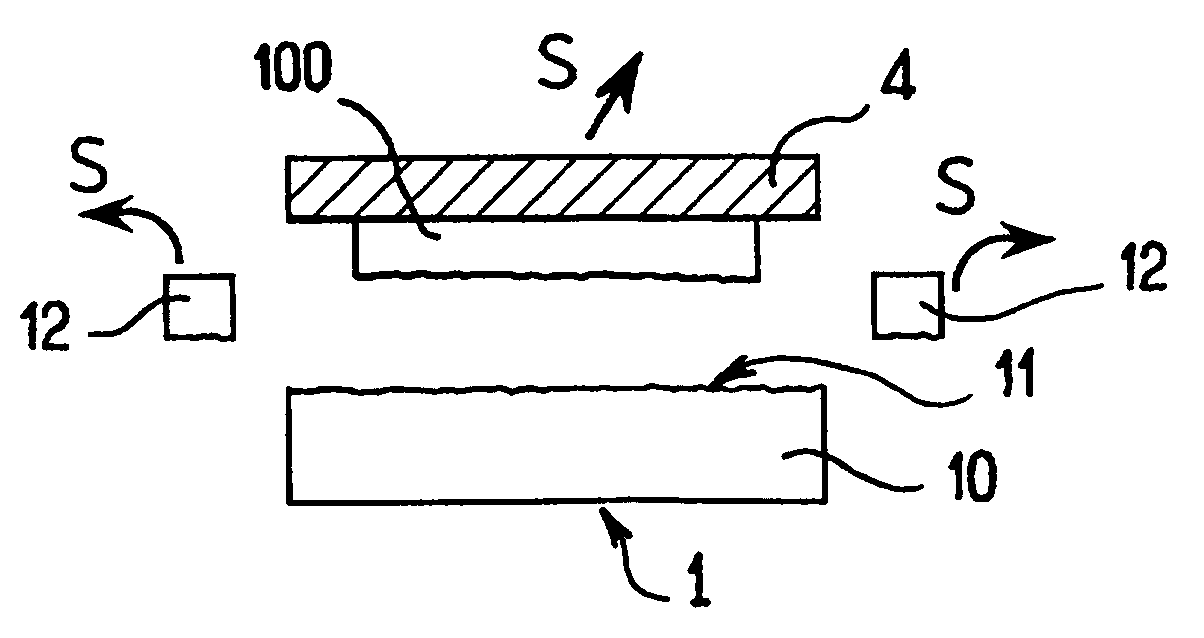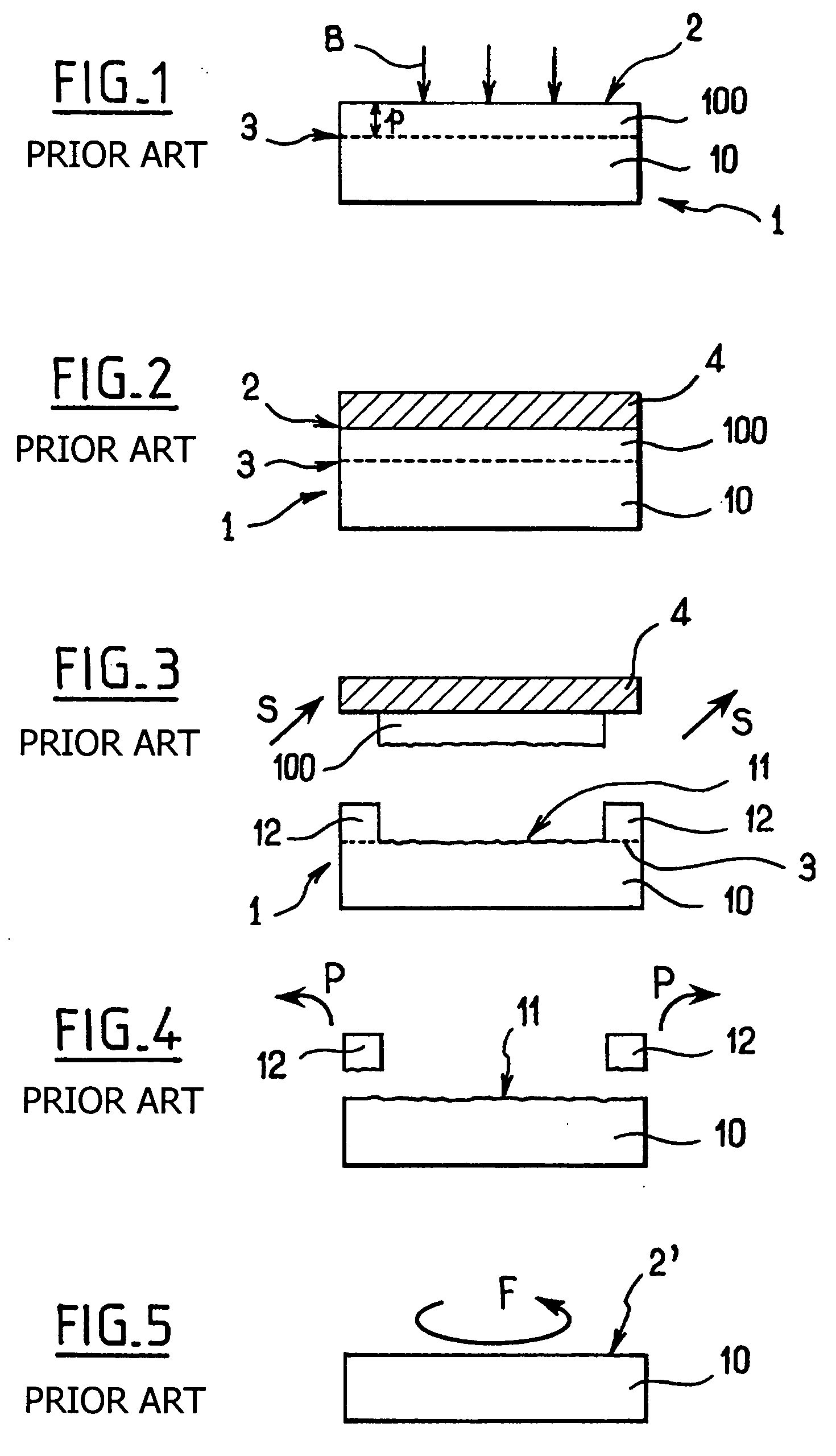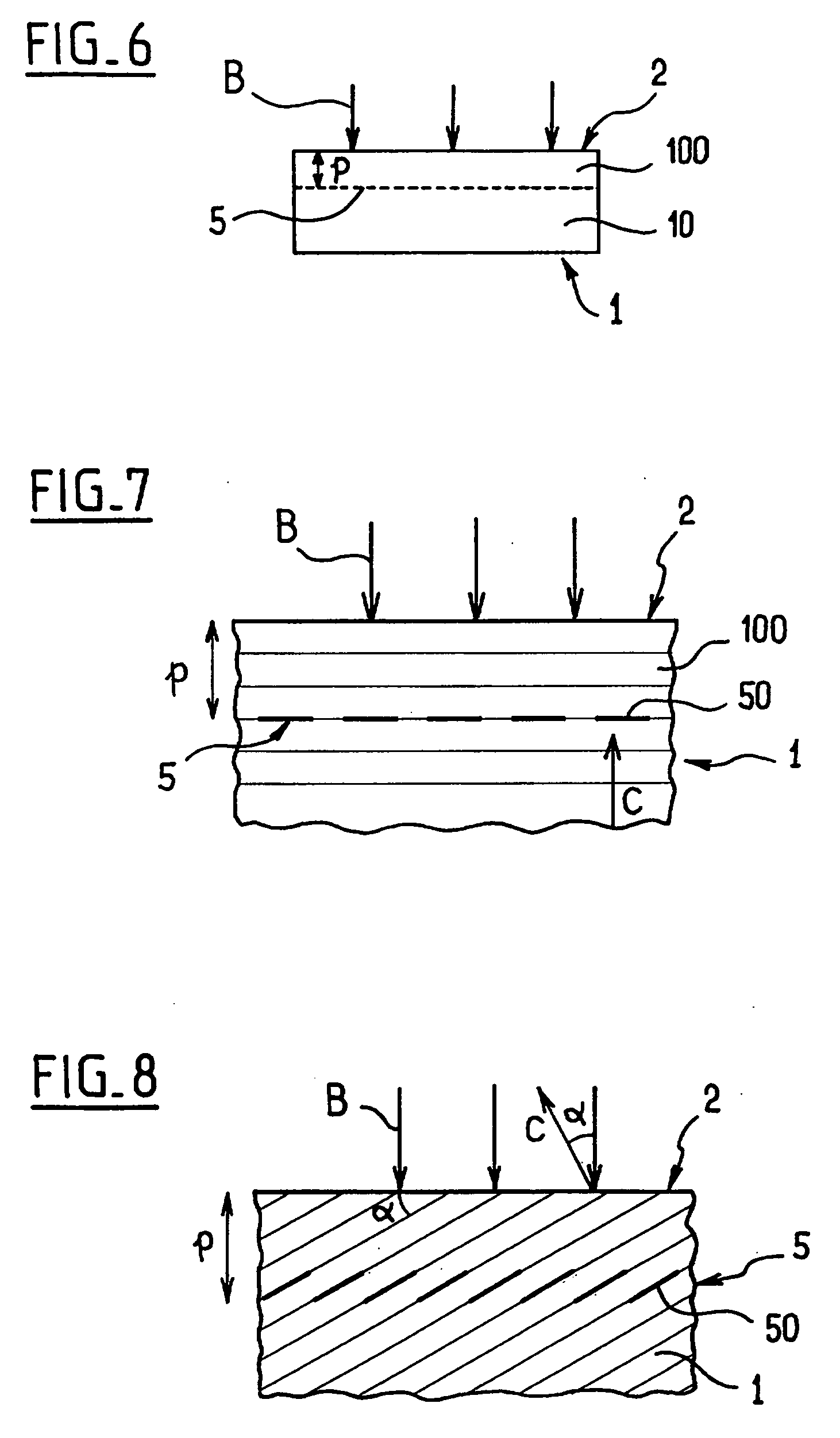Methods for transferring a useful layer of silicon carbide to a receiving substrate
a technology of silicon carbide and receiving substrate, which is applied in the direction of basic electric elements, electrical apparatus, semiconductor devices, etc., can solve the problems of incompatibility of the method with the transfer of a thin film of silicon carbide of good crystalline quality, the irregular surface of the source substrate, and the inability to polish the surface irregularities. to achieve the effect of facilitating the recycling of the remainder portion
- Summary
- Abstract
- Description
- Claims
- Application Information
AI Technical Summary
Benefits of technology
Problems solved by technology
Method used
Image
Examples
Embodiment Construction
[0023] The methods according to the invention will now be described with reference to FIGS. 6-18. FIGS. 6-18 are similar to FIGS. 1-5, and identical elements have the same reference numerals.
[0024] Referring to FIG. 6, a goal of the invention is to optimize the implantation conditions B of atomic species within a source substrate 1 of monocrystalline silicon carbide. In particular, it is desired to create an “optimal weakened zone”5 in the neighborhood of the mean depth p of ion implantation, so that it is possible to remove or exfoliate, after the useful layer 100 is detached and after an appropriate thermal budget is applied, 100% or substantially about 100% of the blistered excess zone 12 which remained integral to the remainder 10 of the source substrate in the prior art (see FIG. 3). “Optimally weakening” means introducing atomic species into the crystal in a precise and controlled manner in order to optimally activate the weakened mechanisms used. The implantation of atomic s...
PUM
| Property | Measurement | Unit |
|---|---|---|
| energy | aaaaa | aaaaa |
| temperature | aaaaa | aaaaa |
| temperature | aaaaa | aaaaa |
Abstract
Description
Claims
Application Information
 Login to View More
Login to View More - R&D
- Intellectual Property
- Life Sciences
- Materials
- Tech Scout
- Unparalleled Data Quality
- Higher Quality Content
- 60% Fewer Hallucinations
Browse by: Latest US Patents, China's latest patents, Technical Efficacy Thesaurus, Application Domain, Technology Topic, Popular Technical Reports.
© 2025 PatSnap. All rights reserved.Legal|Privacy policy|Modern Slavery Act Transparency Statement|Sitemap|About US| Contact US: help@patsnap.com



